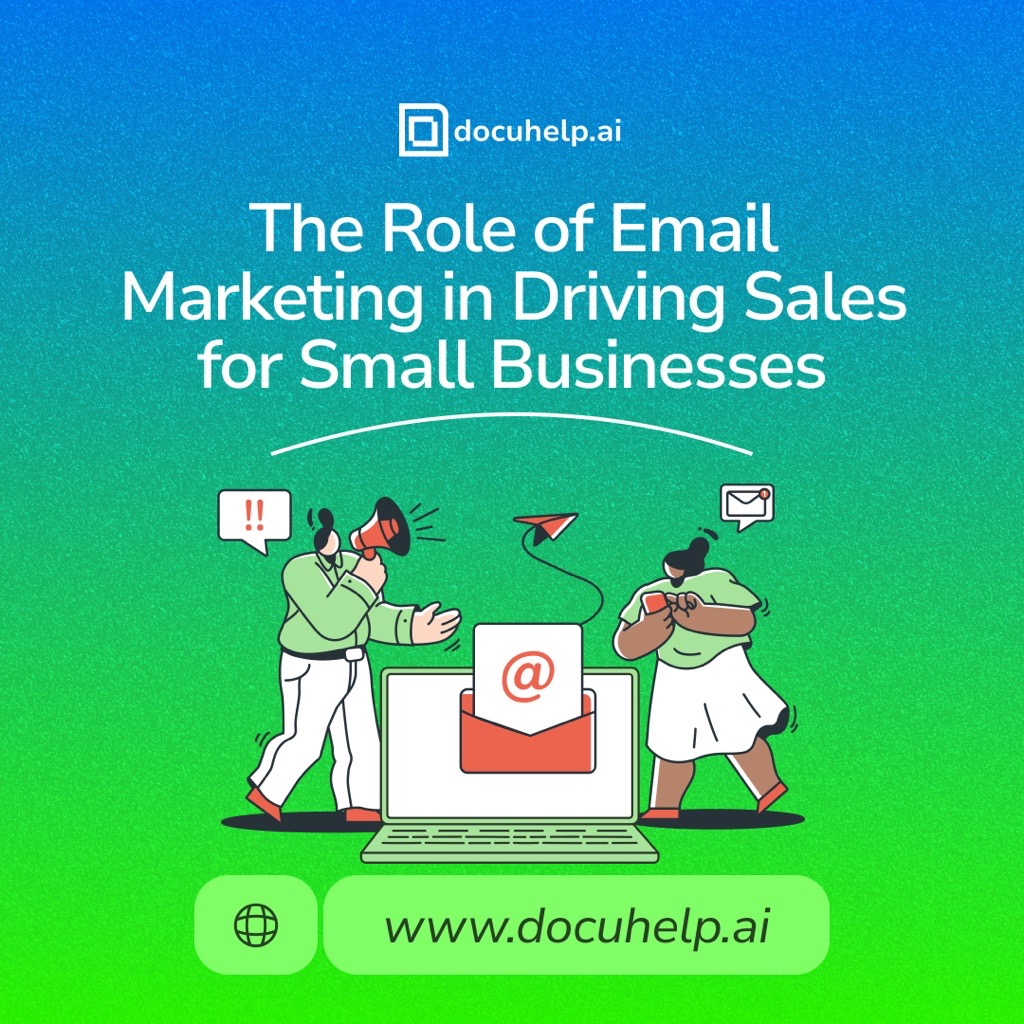Introduction
In today’s competitive digital landscape, small businesses are constantly seeking innovative ways to connect with customers and increase revenue. Among the myriads of marketing tools available, email marketing stands out as a cost-effective and impactful method for driving sales. This blog explores the pivotal role email marketing plays in small business success, offering practical insights and actionable strategies to maximize your campaigns.
Email marketing has become an essential tool for businesses of all sizes, but it’s particularly advantageous for small businesses. Unlike other forms of marketing, email campaigns offer a direct, personalized connection with customers. This level of interaction often leads to a higher return on investment (ROI), making email marketing one of the most effective ways to grow your business without overspending.
What Is Email Marketing and Why Does It Matter?
Email marketing is a direct communication channel that allows businesses to engage with their customers through personalized emails. Whether it’s promotional offers, newsletters, or product updates, email marketing fosters customer relationships and drives measurable results.
Key Benefits of Email Marketing for Small Businesses
Cost-Effective Communication: Unlike traditional advertising, email marketing is budget-friendly and allows businesses to reach a large audience without incurring hefty expenses.
Personalized Messaging: Customization enhances user engagement and improves conversion rates. With advanced tools, businesses can address their customers by name and tailor offers based on previous purchases or preferences.
Measurable ROI: With analytics tools, small businesses can track open rates, click-through rates, and sales conversions. This helps determine the success of each campaign and informs future strategies.
Audience Retention: Regular emails keep your business top-of-mind for customers. Whether it’s a seasonal promotion or a monthly newsletter, consistent communication nurtures customer loyalty.
Email marketing is not just about sending messages; it’s about creating a dialogue with your audience. By delivering value through meaningful content, small businesses can strengthen their brand’s presence in a highly competitive market.
How Email Marketing Drives Sales
Building Trust and Brand Loyalty Email marketing nurtures customer relationships by providing valuable content that aligns with their interests. Over time, this consistent engagement builds trust and encourages repeat purchases. For instance, a small business selling organic skincare products can use email campaigns to educate customers on the benefits of their ingredients, share user testimonials, and offer exclusive discounts.
Increasing Conversion Rates Well-crafted emails with clear calls-to-action (CTAs) guide potential customers through the sales funnel. For instance, an email highlighting a limited-time discount can create urgency and drive conversions. Including strong visuals, clickable buttons, and persuasive language makes the CTA more effective.
Reaching Niche Audiences By segmenting your email list, small businesses can target specific customer groups with tailored offers. This precision ensures higher engagement and better sales outcomes. For example, a fitness studio could send separate emails to members interested in yoga classes and those focused on weight training, catering to their distinct preferences.
Leveraging Automation for Efficiency Automation tools allow small businesses to schedule campaigns, send follow-ups, and create drip marketing sequences that nurture leads over time without additional manual effort. Automated emails can include birthday discounts, post-purchase follow-ups, or abandoned cart reminders—all of which contribute to increased sales.
Best Practices for Effective Email Marketing Campaigns
Crafting Engaging Email Content
Write Compelling Subject Lines: First impressions matter—a catchy subject line boosts open rates. For example, “Exclusive 24-Hour Sale” sparks curiosity and encourages clicks.
Personalize Messages: Use recipient names and tailor content to their preferences. Personalized greetings and recommendations increase the likelihood of engagement.
Include Strong CTAs: Clear and actionable CTAs encourage recipients to take the next step. Phrases like “Shop Now” or “Claim Your Discount” drive immediate action.
Optimizing Email Design
Mobile-Friendly Layouts: Ensure your emails are responsive and look great on all devices. A significant portion of users open emails on smartphones, so readability is key.
Use Visuals Strategically: High-quality images and infographics enhance readability and make your emails visually appealing.
Simplify Navigation: Make it easy for recipients to find links and interact with your content. For instance, a navigation bar in your email can guide users to shop categories or resources.
Timing and Frequency
Send Emails at Optimal Times: Test different times to identify when your audience is most active. For example, mid-morning or early afternoon often yield better open rates.
Avoid Overloading Subscribers: Too many emails can lead to unsubscribes. Instead, maintain a consistent but manageable schedule, such as one or two emails per week.
Analyzing Performance Metrics
Track Key Metrics: Monitor open rates, click-through rates, and conversions. Use these insights to refine your campaigns.
A/B Test Campaigns: Experiment with subject lines, content, and visuals to find what resonates best. For example, test whether a promotional or informational subject line garners more clicks.
How DocuHelp Can Simplify Your Email Marketing Efforts
As a small business owner, balancing email marketing with daily operations can be overwhelming. That’s where DocuHelp comes in. This AI-powered platform streamlines the creation of professional documents, including email templates and newsletters. With DocuHelp, you can:
Quickly generate personalized email campaigns.
Collaborate with your team in real-time for seamless edits.
Optimize messaging with built-in tools for clarity and engagement.
DocuHelp simplifies the documentation process, allowing you to focus on growing your business. Learn more about how it can support your email marketing efforts by visiting DocuHelp.
FAQs
What are the most important metrics to track in email marketing? Tracking metrics like open rates, click-through rates, and conversion rates is essential for evaluating campaign performance. These indicators help identify what works and what needs improvement.
How often should small businesses send marketing emails? The frequency depends on your audience and content. A good starting point is one to two emails per week, ensuring they provide value without overwhelming recipients.
What tools can help with email marketing? Popular tools like Mailchimp, Constant Contact, and DocuHelp offer user-friendly features for creating, automating, and analyzing email campaigns.
Conclusion
Email marketing remains a cornerstone of small business success, offering unparalleled opportunities to connect with customers, build loyalty, and drive sales. By implementing the strategies outlined in this blog and leveraging tools like DocuHelp, your business can unlock the full potential of email marketing.
Remember, the key to effective email marketing is consistency, personalization, and value. Ready to take your campaigns to the next level? Explore DocuHelp today and experience the difference it makes in crafting impactful marketing communications.

